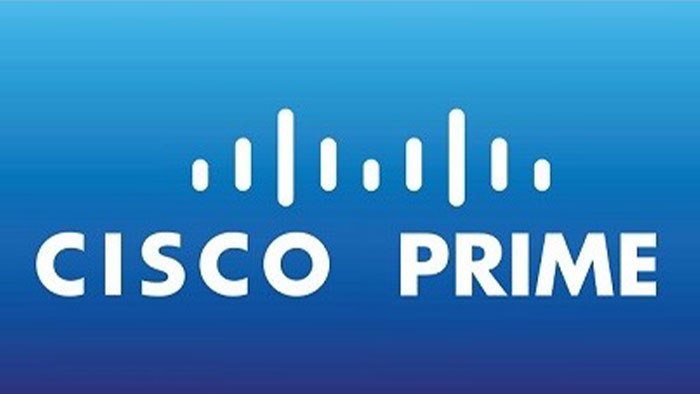
Generally, Cisco Prime products can be categorized in three major services. First, Cisco Prime Infrastructure which provides network monitoring for broad range of activities. Second, Cisco Prime vNAM which offers maximum deployment flexibility bringing application visibility and network analytics for critical observation points.
Finally, Cisco Prime License Manager which enables license management for Cisco’s collaboration devices such as CMS and TMS.
In this article we are going to learn more about Cisco Prime Infrastructure features.
Wireless technology monitoring by using tools available on the monitor menu radio resource management (RRM), provides continuous monitoring of all neighboring wireless lightweight access points or Apes and reports their performance statistics. By using CleanAir technology the system reports on the non 802.11 devices such as microwave ovens or Bluetooth devices that are causing radio frequency interference which you can monitor on.
The interferer’s page CleanAir technology requires that the access points that you deploy support clean air to locate interferers on sitemaps the system must include at least one mobility services engine (MSE).
for detailed information on the devices in the data center you can navigate to compute devices accessible on the monitor and inventory menus the compute resources list provides access to all of the resources and devices that provide or support compute capability you can monitor virtual elements on which the hypervisor such as a VMware ESXi is reporting on the data centers, clusters, hosts and virtual machines. The data that the VM hypervisor such as the ESXi Center collects is summarized on the data center dashboard.
The dashboard reports metrics on hosts, such as host’s usage by CPUs and on virtual machines such as VM statuses and the number of VMs by operating system and resources, compute resources and host CPU and resource usage.
Cisco Prime infrastructure reports application-specific data on various dashboards in the overview category on. You can monitor clients, servers, application bandwidth consumption and response times an application server performance. You can also monitor video application and telephony information such as real time protocol (RTP), streams transporting the most traffic and experiencing the most jitter and packet loss and those sites reporting the worst voice experience based on the mean opinion score or moss on the services menu.
Cisco Prime Infrastructure reports client and user specific data on various dashboards in the overview category. you can monitor summary information about the wired and wireless clients connected to the network including the distribution of Associated clients based on the protocols that they used to connect their extensible authentication protocol or EAP types and their authentication types which helps you determine the number of wired and wireless devices and their connection methods the speed distribution of wired clients which provides insight into the type of wired clients that you have and their bandwidth requirements this information.
Also, can help administrators size the network appropriately a summary list of the active client related alarms including wired client alarms related to the 802.1x group of networking protocols and a subset of wireless alarms. Alarms are current as of the last time that the system refreshed the data client traffic and client posture status which reports the client endpoints that are in or out of compliance with the rules configured on the Cisco Identity Services Engine that authorizes client access to the network and the most used Wireless LAN services.
When the network includes one or more Cisco ISE (Identity Services Engines) for client and endpoint authentication, prime infrastructure can collect additional information about clients.
Faults and events report changing conditions on the network and its devices can indicate when conditions require additional or more immediate attention because fault reporting is a key monitoring feature and can escalate critical changes. Cisco Prime Infrastructure reports that information in many areas of the application to call more immediate attention to alarms that are occurring.
The system provides an alarm indicator on the application banner which displays the number of alarms with the highest severity that are currently active you can click the indicator to open the alarm summary which lists all of the active alarms such as critical major or minor in each alarm category for efficient navigation to the item or items of interest.
Cisco Prime Infrastructure also collects and reports application data from the devices that it manages this way you can monitor and manage various types of network traffic and performance data. NetFlow is a network protocol that the system uses to collect and deliver IP traffic characteristics from devices which indicate how and where traffic is traversing the network to support. NetFlow reporting devices are configured as NetFlow exporters so that they can send data to Prime Infrastructure the system then captures the information in its embedded NetFlow collector when the configuration integrates network analysis modules or names.
Prime infrastructure can collect and correlate network and application metrics calculated by the names to collect data. The system sends a Rask request by using XML to each names REST API. This approach supports detailed analysis of traffic movement and bandwidth usage, and more efficient monitoring of changing Network conditions.to more easily recognize applications on which the system is reporting prime infrastructure relies on the network-based application recognition (NBAR) technology that is embedded in routers, controllers and NAMs.
The NBAR engines on the devices execute deep packet inspection (DPIs) to recognize applications and to send the system application identifiers and application statistics from the devices.